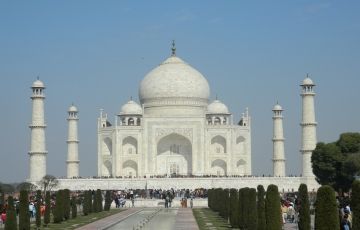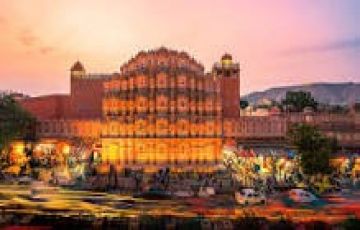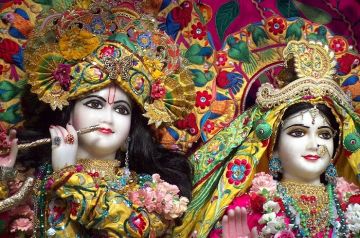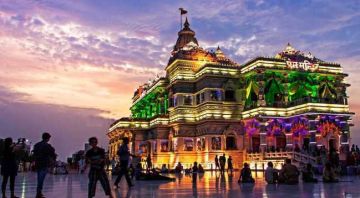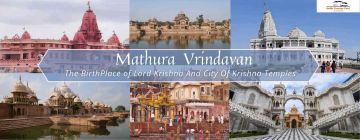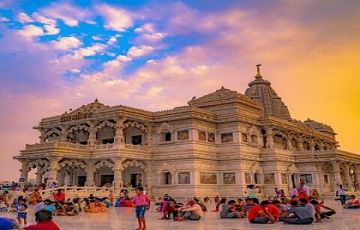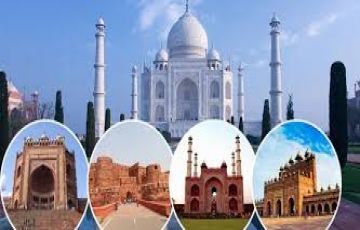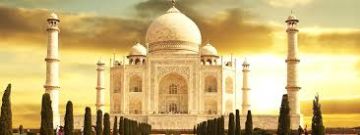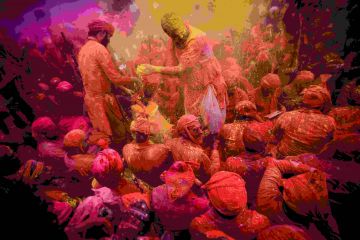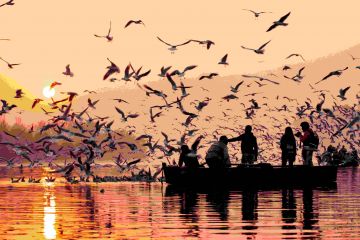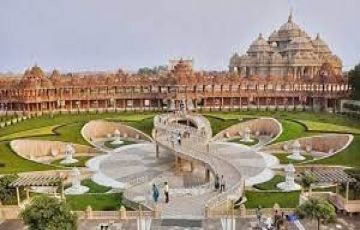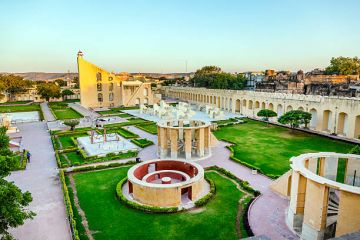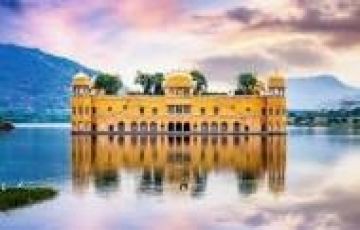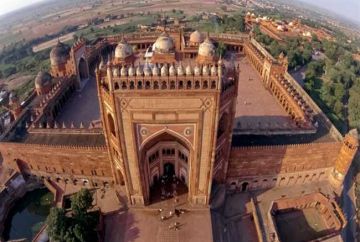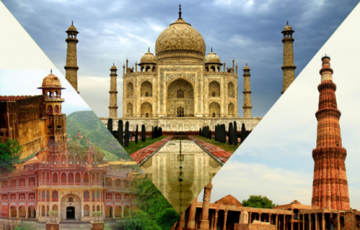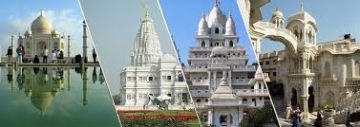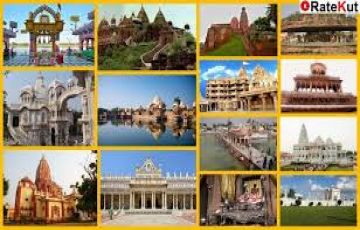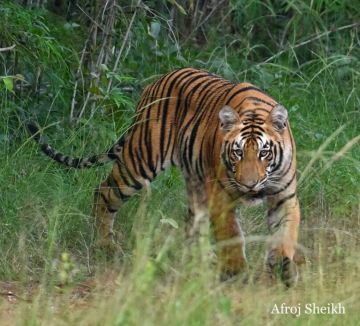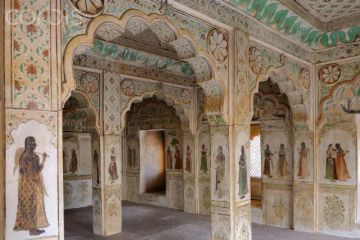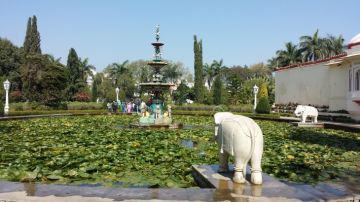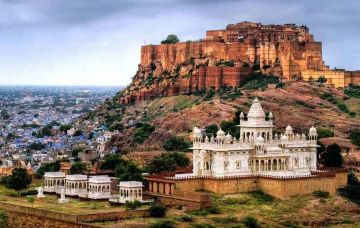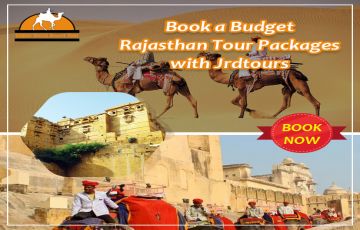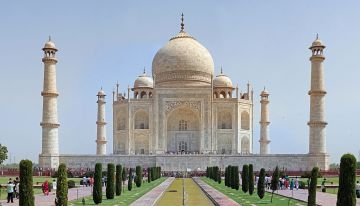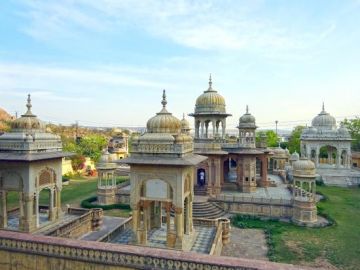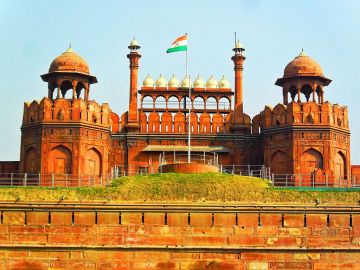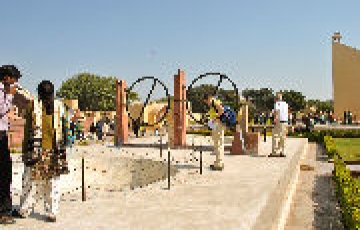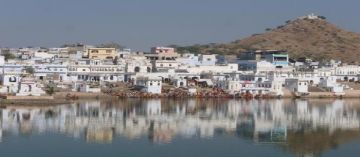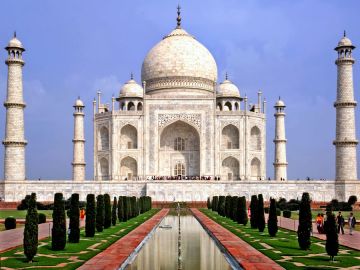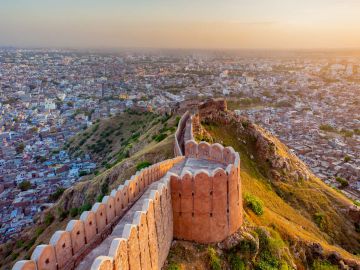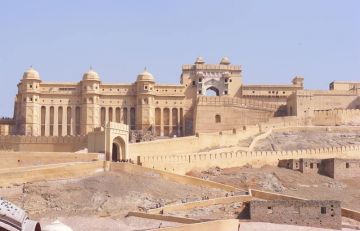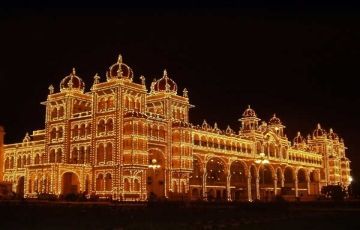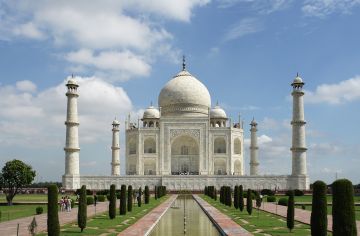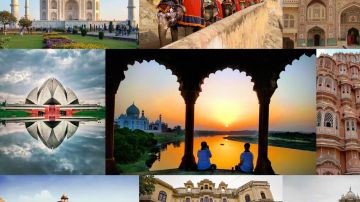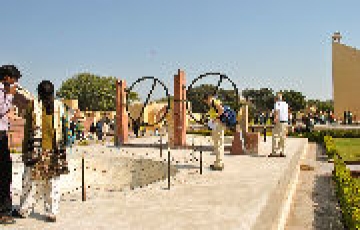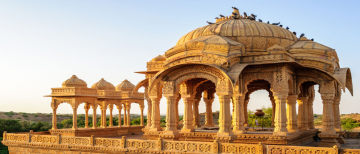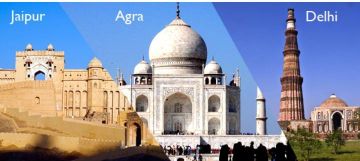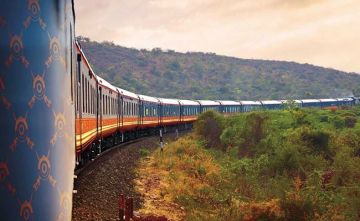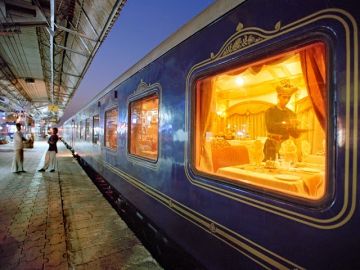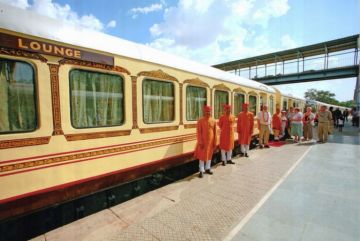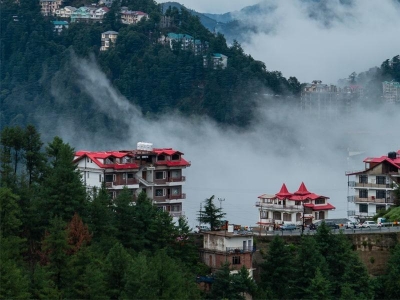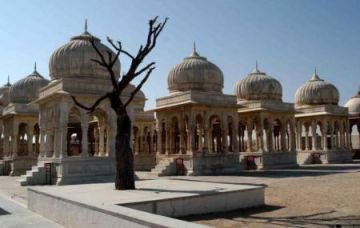Family Getaway 7 Days 6 Nights Jaipur, Abhaneri, Fatehpur Sikri, Agra with Vrindavan Tour Package
Price (per person)
Duration
Tour Type
Itinerary
Arrive Delhi
-Delhi - At the capital of India, we welcome you on arrival in traditional Indian way. Thereafter we take you to the hotel, which is already booked as per your travel plan.
Delhi
+
We conduct the excursion for the city of Delhi, which covers both Old and New Delhi, precisely:
Rajghat: The cremation place converted into memorial for Mahatma Gandhi, the greatest Indian soul.
India Gate: The war memorial of World War I and Afgan War soldiers, unveiled in year 1931.
President’s House: Originally Vicereagal Palace, which is abode to the Presidents of India after independence. Consists of more than 300 rooms and lavish Mughal Gardens. 2nd largest presidential house in the world.
Lotus Temple: This lotus shaped temple is house of worship of Bahai sect but open to all without any discrimination. It is made of white marble.
Qutub Minar: This 72 meters high building is clearly visible shortly before landing at Delhi airport. The intricate carvings of Koranic verses in the red sandstone on the Minar dates back to almost 8 centuries and barely damaged.
Akshardham Temple: Hindu temple complex of Swaminarayan sect, opened in year 2005. The main temple will mesmerize you with its intricate interiors. (Closed on Mondays)
Delhi Jaipur (250 Km - 5 Hrs)
+Jaipur - On day 3, after breakfast you leave for Jaipur, 250 kms from Delhi and 5 hrs. drive. Jaipur is capital of Rajasthan, an Indian state, also known as Pink city for the color of city buildings. Jaipur is leading manufacturer of hand knotted rugs in India. After reaching Jaipur, on the same day you will visit to see yourself the amazing art of traditional rug manufacturing.
Jaipur
+
On this day visit to the highlights of the Royal life of Rajput Maharajas and much more, precisely:
Amber Fort: Built by Raja Man Singh I in 16th century, this fort is situated on a high hill. Tourists may take Elephant ride (subject to availability & operation) to reach the hill top. Made of red sandstone & marble, the architecture and huge fort complex will leave you stunned.
City Palace: This palace has been seat of Maharaja of Jaipur. It has perfectly blend Rajput & Mughal architecture. The palace is converted into museum, which showcases the lifestyle of Royal family.
Birla Temple: Also known as Laxmi-Narayan tample, it is dedicated to Lord Vishnu. Situated on at the base of a hill, this temple looks beautiful in the night, when it is brightly lit.
Jantar Mantar (Observatory): A UNESCO heritage site, built by Raja Sawai Jai Singh in 18th CE, this observatory has astronomical instruments which give accurate predictions till date.
Hawa Mahal (Palace of Breeze): Made for women folks of the Royal family to observe street processions and activities through 593 stone windows, without being seen themselves. It’s a 5 storey building, made of red & pink sandstone.
Jaipur Abhaneri - Fatehpur Sikri - Agra (260 Km - 6 Hrs)
+
After breakfast, you will leave for Agra, 260 Kms from Jaipur and 6 Hrs. drive. En route you will first visit to Abhaneri then Fatehpur Sikri.
Abhaneri – Abhaneri is a small village situated 95 kms from Jaipur. It is famous for the Step Well – Chand Baori and Temple of Harishta Mata.
Fatehpur Sikri – Believed to be the first carefully planned city by the Mughals, this city was founded by Great Emperor Akbar in 1569. Beautifully constructed red sandstone palaces and courts are one of the best Indian Mughal Architectural gems.
In the evening we will reach to Agra. Check-in in respective hotels. Overnight - Agra.
Agra – Agra, once the capital of Great Mughals, situated in Uttar Pradesh on the banks of river Yamuna and more famous for the Taj Mahal. Taj Mahal is undoubtedly the greatest tourist attraction, but it is not the only one.
Agra
+
On day 6 being in Agra you will come across to more places of architectural and historical importance, precisely:
Taj Mahal – One of the greatest piece of architectural beauty of not only India but of the world. Mausoleum made in white marble by Mughal Emperor Shahjahan, in memory of his beloved wife Mumtaj Mahal. (Closed on Fridays)
Agra Fort – UNESCO world heritage site, predecessor of Red Fort in Delhi. Fort was originally built as military establishment by Mughal Emperor Akbar, later part of it used as palace by Emperor Shahjahan.
Tomb of I\\\\\\\\\\\\\\\\\\\\\\\\\\\\\\\'tim?d-ud-Daulah – A beautiful Mughal mausoleum, built by Noorjahan (wife of Emperor Jahangir) for her father. It is also regarded as a draft for Taj Mahal.
Visit to manufacturing of marble artwork – You have seen such marvellous designs made in marble throughout the day, it is now time to visit the artisans. The intricate work is still done by hands and almost remained unchanged for the centuries. Today, Indian marble inlay craft or Parchin kari is one of the most attractive and popular forms of art on the subcontinent.
Agra Vrindavan - Delhi (220 Km- 5 Hrs) Departure
+
On day 7, you will leave for Delhi after the breakfast, 220 Kms from Agra and 5 hrs. drive
Sikandara – On the route first visit is to tomb of Akbar, Sikandara. Akbar, himself commissioned the construction for his own tomb. This place is a perfect blending of Hindu, Christian, Islamic, Buddhist, Jain themes.
Vrindavan - After Sikandara, we will head to Vrindavan, the land of Lord Krishna. Here we will visit to Prem Mandir and ISCON Temple. (Temples remain closed between 12– 16hrs)
Delhi - Later we drive to Delhi. In Delhi we shall take you to a local Indian restaurant for a farewell dinner. After that as per your flight schedule you shall be dropped at International Airport.
Inclusions
- restaurantBreakfast
- hotelAccommodation
- hikingSightseeing
Exclusions
- directions_carTransfers
Terms and Conditions
- keyboard_double_arrow_right 25% Advance at the time of booking + Train/Air Fare charges
- keyboard_double_arrow_right 25% Advance after confirmation of hotels
- keyboard_double_arrow_right Rest on arrival only in cash
Durations
Tour Package by
102
Months
Similar Tour Packages
3 Days Delhi, City Tour, Agra with Taj Mahal Friends Holiday Package
agra to mathura, mathura to vrindavan with vrindavan to agra Tour Package for 3 Days 2 Nights
Amazing 3 Days 2 Night Delhi Mathura Vrindavan Tour Package by INDIA VISIT HOLIDAY TOUR & TRAVEL
Delhi - Mathura Vrindavan Tour Package by The Blue Sky Holiday xxxxxxxxxx
PERFECT TRIP FROM VARANASI TO AGRA,MATHURA & VRINDAVAN
VARANASI TO DELHI TOUR IN JUST 7 DAYS COMPLETE PACKAGE
7 Days Delhi, Agra, Fatehpur Sikri and Jaipur Culture Trip Package
7 Days Delhi Agra Mathura Virindavan Tour Package
Family Getaway Agra Fatehpur Sikri Agra Tour Package for 8 Days 7 Nights
8 Days 7 Nights Udaipur to Bundi Historical Places Holiday Package
Memorable 9 Days Agra to Bharatpur Family Vacation Package
Ecstatic 10 Days Fatehpur Sikri Family Holiday Package
Family Getaway 8 Days 7 Nights Bharatpur Friends Vacation Package
12 Days Agra, Fatehpur Sikri, Bharatpur with Jaipur Nature Holiday Package
Similar Places

Jhalana Safari Park
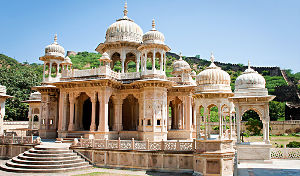
Gaitor Ki Chhatriyan

Bring Back the Old Times with the Vintage Car Rally In Jaipur
4.0 (8 Ratings)
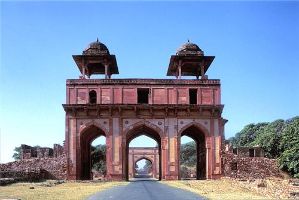
Naubat Khana
_1508092549t.jpg)
Banke Bihari Mandir
4.0 (8 Ratings)
_1508093914t.jpg)
Madan Mohan Temple
5.0 (8 Ratings)
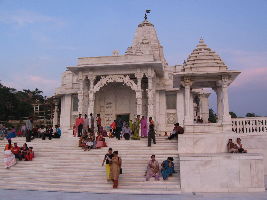
Birla Mandir
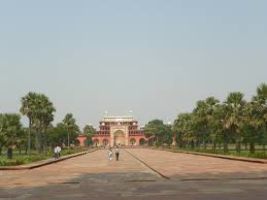
Akbars tomb
Tour Packages For Jaipur, Abhaneri, Fatehpur Sikri, Agra, Vrindavan
5 NIGHTS 6 DAYS GOLDEN TRIANGLE TOUR BY JIGYASA HOLIDAYS
4 Days 3 Nights Delhi to Agra , Jaipur Tour Package by Shri Narmada group
Pleasurable 8 Days Sawai Madhopur to Jaipur Holiday Package
Experience 8 Days Udaipur, Jodhpur, Agra with Jaipur Culture Tour Package
Ecstatic 8 Days Jodhpur, Jaisalmer, Bikaner and Jaipur Trip Package
Ecstatic 9 Days Bikaner, Jaisalmer, Jodhpur with Mount Abu Holiday Package
- Home
- India
- Jaipur Tours
- Family Getaway 7 Days 6 Nights Jaipur, Abhaneri, Fatehpur Sikri, Agra with Vrindavan Tour Package
- Log in
- Enquiry Form
To City (Destination)
From City
Travel Date
Travel Duration (In Days)
Adult
Child
Infant
Travel With
Hotel
Rooms
Interested In
Budget (in INR)
Ticket Booked ?
Ticket Required?
Mode of Transport
Ticket Category
I will book
Date of Birth
Gender
Marital Status
Income (Per Month)
Nationality
Preferred Language
No. of International Trips
Do you have a Visa ?
Do you have a Passport?
Preferred Time to Call
We have identified additional inquiries related to your tour. Please review them and let us know if there are any inquiries you would like us to remove.
